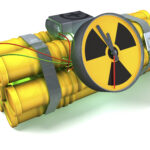We found it incredible that the latest issue (November/December 2014) of Healthcare Executive Magazine, the flagship publication of the American College of Healthcare Executives (ACHE), had no mention of Ebola in the articles it ran. The biggest story on the planet, never mind healthcare, could not find room in the valuable real estate of the prestigious publication. Lack of leadership is not a new phenomenon, in the wake of Hurricane Katrina and the continual erosion of Emergency and All Hazards Preparedness, from 2007, the letter below was sent three years in a row to the incoming Chairman of ACHE.
A SEASONED MEMBER OF THE AMERICAN COLLEGE OF HEALTHCARE EXECUTIVES SHARES HIS CONCERNS WITH THE INCOMING CHAIRMAN
It takes more than an inattentive hospital and healthcare operating sector to live up to its expected role in the nation’s strategy for Homeland Security.
The correspondence below was originally written to the attention of xxxxx, your predecessor. Unfortunately, there is little evidence that the organization has responded to the nation’s strategy for homeland security readiness. The triple threats (pandemic, more robust natural disasters and terrorism) are even more real today as you take office than when xxxxx did. Accordingly I am sending this letter to you in its original form.
Stay safe – Jim.
Dear xxxxxxx,
I first want to wish you well on your stewardship in the coming year. You assume the helm at a time fraught with unknown but predictable danger. Strong Healthcare Executive leadership may well make the difference between retaining everyday life as we know it today and retreating to a less desirable state. Emerging infectious diseases, increasingly more robust natural disasters, and creative man made terrorist events are known challenges for which the system must be prepared.
Post 9/11, I came out of semi-retirement to look for a possible role in the healthcare sector which would contribute to the national homeland security effort. Expanding my Consulting role with Native American Tribes to include Homeland Security readiness was a good start. The need for a more comprehensive understanding of the national strategy for homeland security led me to pursue formal training in Anti-terrorism/Counter-terrorism (Master certification in anti-terrorism) and Certification in Homeland Security (CHS-V) the highest Homeland Security level in the American College of Forensic Examiners International (ACFEI) program. Earlier certification in Healthcare Safety and Security and advanced military CBRNE training balanced out my working knowledge of the essentials for a comprehensive understanding of Homeland Security expectations for healthcare readiness.
Three years following 9/11, a group of us, seasoned healthcare management experts, joined by a number of domain experts in anti-terrorism, anti-cyber-terrorism, counter-terrorism and critical infrastructure design and construction established a self-funded study group to determine how well the non-federal healthcare industry was prepared to meet the requirements found in the Initial National Response Plan (INRP) and the proposed National Incident Management System (NIMS). The National Strategy for Homeland Security viewed these documents as the foundation on which a new framework for a comprehensive plan to protect the nation from future terrorist attacks. The Federal authority underpinning these planning efforts is identified in a plethora of legislative laws, Presidential Directives, Executive Orders and Regulations.
Foremost among them was the legislation establishing the Department of Homeland Security (DHS) from all or parts of 22 existing federal entities with their 180,000 employees. Homeland Security Presidential Directives (HSPDs 5-7-8) identify Hospitals and Clinics as Critical Infrastructures and Key Assets (CI/KA) and healthcare personnel as First Responders. National Preparedness Goals (Goals) clearly place the healthcare community in a full-partnership role in the National Incident Management System.
Our study concluded that there is a demonstrable and measurable lack of CBRNE readiness in both urban and rural healthcare environments. The healthcare industry, in general, and the hospital industry, in particular, has been the target of mounting “think tank” and public media criticism for their lack of all-hazards preparedness, particularly against biological threats from natural or terrorist sources. Findings of the legislative branch’s “watch dog,” the Government Accountability Office (GAO) and numerous reports from the Office of the Inspector General, Department of Health and Human Services have not only supported these public observations but have been more direct in their criticism.
Following 9/11 attacks there was a flurry of activity within the healthcare community and all levels of oversight communities resulting in copious volumes of guidance on dealing with the terrorism menace. A closer analysis of these actions reveals that the non-federal health sector oversight compliance standards did not change to reflect the guidance. An analysis of ACHE 2003-2005 publications, educational seminars, and conferences were essentially devoid of information on, or advocacy for, a strong voluntary commitment to Homeland Security readiness. The only ACHE seminar dealing with the issue was repeatedly cancelled for lack of interest and the excellent book dealing with the issue published by ACHE, according to the Authors, was far from a best seller. Seminars presented at the 2005 Congress dealing with future design and construction of healthcare facilities failed to address important issues of critical infrastructure protection, indeed, they stressed the use of more glass and open structure. The industry is in the midst of a construction “boom” which will be building the healthcare workplace environment for the next 30-40 years. There is little evidence that there is any serious attempt to integrate known, and federally mandated “best practice protection”(for all federal facilities) into future non-federal healthcare facilities. As you noted in your interview, responding to the question “How does ACHE help healthcare executives address the challenges they face?” you emphasized the importance of educational programs in the practice of the profession. We are in complete agreement on this issue, which leads me to the next action I took to elevate my concerns.
Concluding that there is an appearance of “cognitive dissonance” between my understanding of threat we face and the appearance of a mixture of apathy and denial on the part of many professional colleagues (ACHE Fellow since 1988) I contacted senior ACHE executive leadership to surface my concerns and offered to submit general background information to the membership through any appropriate vehicle of their choice.  I was told that ACHE does not advocate for this type of issue. I indicated that I strongly disagree with that position. After a series of conversations I was told that the Board would be asked to consider the issue of the appropriateness of ACHE providing strong advocacy on industry voluntary compliance with the National strategy for healthcare homeland Security. The following month I was notified that the Board had considered the issue and agreed with senior executive leadership not to take a public policy advocacy position.
Again I wish you well and sincerely hope that your tenure will be peaceful. Â I have listed a couple of attachments, one deals with what I identify as “unacceptable” accepted “myths” about threats to the system and a limited list of references which support my conclusions. I strongly suggest that ACHE reconsider this issue and take a strong Leadership role in advocating for the Industry’s full-partnership in the Nation’s Strategy for Homeland Security Emergency Readiness. I apologize for the length of this correspondence. I will be available to discuss any of the issues I have surfaced. Thank you in advance for your consideration in this matter.
Jim Blair, FACHE
Myths and Realities and References






0 Comments